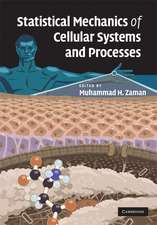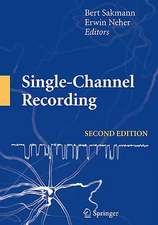Principles of Energetics: Based on Applications de la thermodynamique du non-équilibre by P. Chartier, M. Gross, and K. S. Spiegler
Autor K. S. Spiegler, P. Chartier, M. G. Rossen Limba Engleză Paperback – 25 feb 2012
Preț: 358.87 lei
Nou
Puncte Express: 538
Preț estimativ în valută:
68.67€ • 71.84$ • 57.04£
68.67€ • 71.84$ • 57.04£
Carte tipărită la comandă
Livrare economică 29 martie-04 aprilie
Preluare comenzi: 021 569.72.76
Specificații
ISBN-13: 9783642954368
ISBN-10: 3642954367
Pagini: 184
Ilustrații: XI, 170 p.
Dimensiuni: 158 x 244 x 10 mm
Ediția:Softcover reprint of the original 1st ed. 1983
Editura: Springer Berlin, Heidelberg
Colecția Springer
Locul publicării:Berlin, Heidelberg, Germany
ISBN-10: 3642954367
Pagini: 184
Ilustrații: XI, 170 p.
Dimensiuni: 158 x 244 x 10 mm
Ediția:Softcover reprint of the original 1st ed. 1983
Editura: Springer Berlin, Heidelberg
Colecția Springer
Locul publicării:Berlin, Heidelberg, Germany
Public țintă
ResearchCuprins
I. Fundamental Concepts.- A. Introduction.- B. Definitions.- C. Postulates.- Problems.- Selected Literature.- II. Exergy.- A. Introduction.- B. Exergy of a Closed System.- C. Exergy Accounting in Flow Systems.- D. Relationship Between Exergy Disappearance and Entropy Creation.- E. Exergetic and Thermoeconomic Analyses.- Problems.- Selected Literature.- III. Generalized Forces.- A. Introduction.- B. Choice of Driving Forces.- C. Comparison of Generalized with Conventional Driving Forces.- Problems.- Selected Literature.- IV. Isothermal Flow Coupling.- A. Introduction.- B. Mass Transfer in Ionic Membranes.- C. inear Phenomenological Relations Between Fluxes and Generalized Driving Forces.- D. Electrokinetic Flow Equations.- Problems.- Selected Literature.- V. Conductance Coefficients and Reciprocity Relations.- A. Laws About the Magnitude of Conductance Coefficients.- B. Proofs of the Laws.- C. Degree of Coupling.- Problems.- Selected Literature.- VI. General Energetics of Chemical Reactions.- A. Introduction.- B. Generalized Forces and “Flows” of Chemical Reactions.- C. Coupled Chemical Reactions.- Problems.- Selected Literature.- VII. Interdiffusion of Gases in Porous Media.- A. Introduction.- B. Friction Model.- C. Diffusion Under Knudsen Conditions.- D. Interdiffusion at Uniform Pressure.- E. Summary.- Selected Literature.- VIII. Molecular Filtration Through Membranes.- A. Introduction.- B. Review of Osmotic-Pressure Equations.- C. Flow Equations.- Problems.- Selected Literature.- IX. Coupled Heat and Mass Flow.- A. Introduction.- B. Adiabatic Gas Flow Through Porous Media.- C. Flux Equations.- D. Heat of Transfer of Ideal Gases (Gas-Kinetic Interpretation).- E. Summary.- Problem.- Selected Literature.- X. Thermoelectric Phenomena.- A. Introduction.- B. Qualitative Discussion of the Coupling Effects.- C. Flow Equations and Relations Between Thermoelectric Phenomena.- Problems.- Selected Literature.- List of Symbols.- Appendix I. Carnot’s Engine.- Appendix II. Dependence of Chemical Potential on Concentration.- Appendix III. Answers to Problems.















